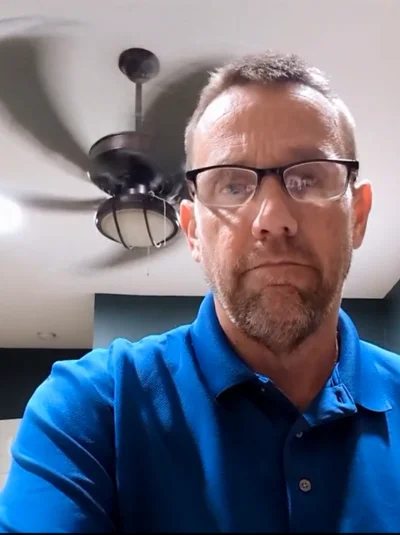Cross-chain trading is a crucial feature for modern crypto exchanges as it allows users to trade cryptocurrencies across different blockchains without the need for intermediaries or centralized exchanges. Implementing cross-chain trading enhances liquidity, opens up new trading pairs, and aligns with the decentralization ethos of blockchain technology.
In this comprehensive guide, we’ll walk you through the step-by-step process of implementing cross-chain trading in a cryptocurrency exchange. We’ll cover everything from the basics to technical and security aspects, ensuring that you can set up this feature seamlessly.
Build Your Secure Crypto Exchange Today!
A Cryptocurrency Exchange Development Company specializes in building secure, scalable platforms for trading digital assets

What is Cross-Chain Trading?
Cross-chain trading refers to the ability to trade tokens or cryptocurrencies that exist on different blockchains. For example, trading Bitcoin (BTC) on the Bitcoin blockchain for Ether (ETH) on the Ethereum blockchain is considered a cross-chain transaction.
Benefits of Cross-Chain Trading
- Decentralization: Eliminates the need for centralized exchanges or third-party intermediaries.
- Increased liquidity: More trading pairs become available across different blockchain ecosystems.
- Interoperability: Blockchains can communicate with each other, facilitating seamless exchanges.
- Security: Users maintain control of their private keys, ensuring higher security.
Key Concepts Behind Cross-Chain Trading
Before diving into implementation, it’s important to understand the basic elements involved in cross-chain trading:
1. Atomic Swaps
- Atomic Swaps allow two parties to exchange cryptocurrencies across different blockchains without an intermediary. The trade is either completed successfully or not at all, ensuring both parties are protected.
- Key Points:
- Utilizes Hash Time-Locked Contracts (HTLCs).
- Provides security by ensuring both parties receive their respective assets simultaneously.
2. Relayers
- Relayers act as bridge operators who facilitate communication between different blockchain networks. They are crucial for verifying transactions across different chains.
3. Oracles
- Oracles feed off-chain data to on-chain smart contracts, providing real-time pricing and ensuring accurate execution of trades.
4. Cross-Chain Bridges
- These bridges allow token transfers between different blockchains and are crucial for moving liquidity across networks.
Start Your Centralized Exchange Today!
Develop a secure, scalable centralized crypto exchange with advanced trading features, liquidity solutions, and user-friendly UI

Step-by-Step Process of Implementing Cross-Chain Trading in Crypto Exchanges
Step 1: Select Supported Blockchains
First, decide which blockchains you want to support for cross-chain trading. Some popular choices include:
- Bitcoin (BTC)
- Ethereum (ETH)
- Binance Smart Chain (BSC)
- Polkadot (DOT)
- Solana (SOL)
Step 2: Build or Integrate Cross-Chain Bridges
- Set up cross-chain bridges that connect the supported blockchains. These bridges ensure that tokens can be moved between different networks seamlessly.
Example of Cross-Chain Bridges:
Blockchain | Bridge | Use Case |
Ethereum ↔ BSC | Binance Bridge | Token swaps between Ethereum and BSC |
Bitcoin ↔ Ethereum | RenBridge | Exchange BTC for ETH or vice versa |
Ethereum ↔ Polkadot | Polkadot Bridge | Swap assets between Ethereum and DOT |
- Note: Ensure that the bridge is well-audited for security vulnerabilities.
Step 3: Implement Atomic Swaps
- Utilize Hash Time-Locked Contracts (HTLCs) to facilitate atomic swaps between chains. This ensures that the swap only happens if both parties meet the conditions of the trade.
How HTLC Works:
- Both parties create a contract using the same cryptographic hash.
- One party sends the asset, and the other must provide the correct hash key within a specified time.
- If the key is correct, the swap is completed, ensuring trustless transactions.
Steps to Implement HTLC:
- Generate the cryptographic hash of a secret value.
- Lock the funds using the hash on the respective chains.
- Only unlock the funds when the correct key is provided by both parties.
Step 4: Develop Relayers
- Build relayers to monitor and verify transactions on both chains. Relayers play a critical role in ensuring that the transaction is completed on both blockchains.
Important Considerations:
- Ensure relayers are highly secure and decentralized to avoid points of failure.
- Monitor network conditions, as relayers must respond in real-time to prevent transaction delays or failures.

Step 5: Smart Contract Integration
- Write smart contracts that enforce the terms of the cross-chain trade.
- These smart contracts will handle the following:
- Escrow of assets during the trade.
- Release of assets when conditions are met.
- Reverting trades if conditions aren’t fulfilled within the specified time.
Step 6: Incorporate Oracles for Pricing Data
- Accurate pricing data is essential for fair trades across different blockchains. Integrate decentralized oracles to ensure real-time price feeds.
Example of Oracle Providers:
Oracle Provider | Supported Chains |
Chainlink | Ethereum, BSC, Solana |
Band Protocol | Ethereum, Binance Smart Chain |
DIA | Ethereum, Polkadot, Solana |
Step 7: Set Up User Interface (UI)
- Design a user-friendly interface that allows traders to initiate cross-chain swaps easily. The UI should guide users through the process, ensuring clarity in steps like:
- Selecting the chains.
- Inputting wallet addresses.
- Confirming atomic swap details.
UI Best Practices:
- Provide real-time status updates for the swap.
- Ensure error handling in case of delays or failures.
- Add tooltips and FAQs for user education.
Step 8: Test the Cross-Chain Protocols
- Perform rigorous testing to ensure that all components—atomic swaps, relayers, smart contracts, and bridges—work together smoothly. Use testnets of different blockchains before launching on mainnets.
Testing Checklist:
- Test different asset combinations.
- Simulate network delays and failures.
- Ensure security features like HTLC work as intended.
Security Considerations for Cross-Chain Trading
Security is one of the most critical aspects of cross-chain trading. Here are some essential security measures:
1. Audits
- Regularly audit the smart contracts and bridges involved in cross-chain trading to identify and fix vulnerabilities.
2. Multi-Signature Wallets
- Implement multi-signature wallets for relayers to prevent a single point of failure. This requires multiple parties to approve a transaction before it is processed.
3. Monitoring
- Monitor transactions in real time to detect suspicious activity. Use blockchain explorers and analytics tools to trace transactions.
4. Time Lock
- Set appropriate time locks for atomic swaps. Ensure users have enough time to provide their cryptographic keys, but not too much to avoid delaying trades.
Challenges in Implementing Cross-Chain Trading
Despite its many advantages, cross-chain trading comes with some challenges:
- Interoperability: Different blockchains use varying consensus mechanisms and architectures, making interoperability complex.
- Scalability: As the number of supported blockchains increases, the complexity of the system grows, affecting performance.
- Security Risks: Bridges and smart contracts are prime targets for hackers, requiring ongoing maintenance and security updates.
Conclusion
Implementing cross-chain trading is a powerful way to enhance the capabilities of a crypto exchange, offering greater flexibility, liquidity, and decentralization. By understanding the foundational elements like atomic swaps, cross-chain bridges, relayers, and oracles, you can build a secure and efficient system for your users.
Key Takeaways:
- Atomic Swaps provide the foundation for cross-chain trading without intermediaries.
- Cross-Chain Bridges facilitate token transfers between different blockchains.
- Relayers and Oracles are essential for transaction verification and real-time data feeds.
- Security measures such as multi-signature wallets and audits are critical for maintaining trust.
By following the steps outlined in this guide, you can successfully implement cross-chain trading in your exchange, ensuring that your users benefit from a seamless, decentralized trading experience.
If you’re looking to develop a crypto exchange with advanced cross-chain trading features, contact SDLC CORP, where we offer comprehensive blockchain development solutions tailored to your needs.
Secure Cryptocurrency Trading Solutions
Custom cryptocurrency exchange software development services offering secure, scalable platforms for seamless digital asset trading and management


















